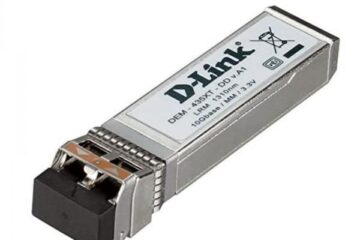Choosing the right adhesive can make or break your project when it comes to tiling. Whether you’re a DIY enthusiast or a professional tiler, understanding tile adhesive is key to ensuring your tiles stay secure and last for years to come. Tile adhesive, sometimes called tile glue or mortar, is the binding material that holds your tiles in place on walls, floors, or other surfaces. But with so many options available, it’s easy to feel overwhelmed by the choices.
In this guide, we’ll cover everything you need to know about tile adhesive—from the different types to application techniques and tips for ensuring your tiling project goes smoothly.
What Is Tile Adhesive?
Tile adhesive is a specially formulated material used to stick tiles onto various surfaces. It ensures that tiles remain secure, withstand pressure, and resist environmental factors such as moisture and temperature changes. The adhesive must bond the tile to the substrate (the surface beneath the tile), which could be concrete, wood, or drywall, among other materials.
The right adhesive ensures tiles don’t crack, shift, or loosen over time, which could cause expensive repairs and safety hazards down the line. Depending on your project, you may need a specific type of adhesive to suit the material of the tile and the location where it will be applied.
Types of Tile Adhesives
Choosing the correct adhesive starts with understanding the different types available. Each type has its own set of characteristics and applications, making it suitable for certain conditions and tile materials.
1. Ready-Mixed Adhesive
Ready-mixed tile adhesive is a pre-made solution often sold in tubs. It’s water-based and convenient for smaller tiling jobs or for beginners who may not feel comfortable mixing adhesive themselves. Ready-mixed adhesives are suitable for wall tiles, especially in areas with less moisture exposure, such as kitchen backsplashes.
2. Cement-Based Adhesive
Cement-based adhesives are highly versatile and suitable for both wall and floor tiles. These adhesives come in powder form and need to be mixed with water before application. Cement-based adhesives are popular because of their strong bond and moisture resistance, making them ideal for bathrooms, showers, and outdoor projects. Some cement-based adhesives include polymers for added flexibility, which helps prevent cracking and damage over time.
3. Epoxy Adhesive
Epoxy tile adhesive is incredibly strong and durable, making it ideal for heavy-duty applications. It is highly resistant to chemicals, moisture, and stains, making it a great option for industrial or commercial spaces. Epoxy adhesive is more expensive and requires more skill to apply, so it’s typically used by professionals for specialised jobs.
4. Flexible Adhesive
For areas that are prone to movement, such as wooden floors or surfaces that may expand and contract due to temperature changes, flexible adhesives are a must. These adhesives contain polymers that allow the bond to stretch slightly without breaking, which helps tiles stay firmly in place on surfaces that are likely to shift over time.
Factors to Consider When Choosing Tile Adhesive
Choosing the right adhesive isn’t as simple as picking the first one you find. Several factors can influence which adhesive will work best for your project.
1. Type of Tile
The material of your tile plays a significant role in determining the type of adhesive you’ll need. For example, ceramic tiles are more lightweight and don’t require an extremely strong adhesive, while heavier materials like stone or porcelain may require cement-based or epoxy adhesives for a durable hold.
2. Location
Where you plan to install the tiles is another critical factor. Tiles in a kitchen backsplash won’t experience the same moisture or weight as tiles in a bathroom or outdoor patio. For wet areas like showers or swimming pools, look for adhesives with waterproof or water-resistant properties.
3. Surface Type
The substrate, or surface you’re tiling on, also affects the type of adhesive you should use. For example, concrete floors may bond well with cement-based adhesives, while wooden surfaces may require a more flexible adhesive to accommodate movement.
4. Flexibility
In areas prone to shifts, such as wooden or heated floors, flexibility is key. A flexible adhesive will prevent tiles from cracking or popping out when the underlying surface moves.
5. Ease of Application
For smaller DIY projects, a ready-mixed adhesive can simplify the process. These adhesives come pre-mixed and are ready to apply right out of the tub. Cement-based adhesives, on the other hand, require mixing and are more suited for experienced tilers or larger projects.
Common Mistakes to Avoid
Even seasoned tilers can make mistakes, especially if they’re in a hurry or don’t follow the proper steps. Here are some common pitfalls to watch out for:
- Applying too much adhesive: A thick layer can cause tiles to shift or sink, leading to uneven surfaces.
- Not using the right trowel size: Different tile sizes require different notched trowels. A larger tile will need deeper notches for proper adhesion.
- Skipping surface preparation: Failing to clean or level the surface before applying adhesive can weaken the bond, causing the tiles to pop off or crack.
Conclusion
Tile adhesive is a critical component of any tiling project, and choosing the right one is essential for long-lasting, durable results. Whether you’re working with ceramic tiles in your kitchen or installing stone tiles in an outdoor area, understanding the different types of adhesives and how to apply them will ensure your project is a success.
By taking into account factors like the type of tile, the location, and the surface you’re tiling, you can select the ideal adhesive and avoid common mistakes that can lead to costly repairs.
Keep an eye for more latest news & updates on Discover Tribune!




